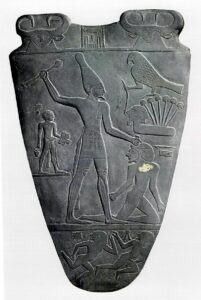centralized government and the prosperity of the land
“It seemed that the organization needed to undertake large-scale land reform and irrigation would only be possible once the political machine had been designed.
A centralized government under a single king.
Tradition has it that Menes was responsible for building the Nile dams to control the flood waters.
It is probable that the unification of Egypt and the dramatic transformation it brought about in the coordination and acceleration of all the various communal enterprises seems, in retrospect, miraculous.
The kingship and prosperity of the land would then be indivisible. ” (ALDRED, 1970: 50).
the first king of Egypt | the historical sources
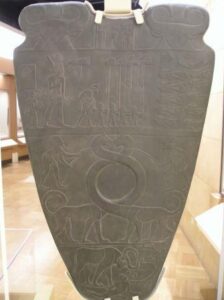
According to the known historical sources about the first king of Egypt
- the tomb inscriptions of Nagada e de Abidos.
- the iconography of the Hieracompolis palette and the testimony of the priest Maneton (Ptolemaic times).
There was a royal personality named Menes or Narmer, who unified the territories of Upper Egypt (South) and Lower Egypt (North).
He was responsible for founding the 1st Dynasty, which would be followed by 3000 years of history.
It is from here that the first chrono-cultural division of the political history of Ancient Egypt is made, entitled the Archaic period (3000-2635 BC), or, if we prefer, the Tinian period.
This designation derives from the name of the first capital where political power was centralized: This or Thinis.
the government of the First King of Egypt
The government of Menes – considered Egypt’s first king – was an absolute monarchy and its symbol was the pschent.
A crown made up of a combination of the two previously existing crowns: the White Hedjet crown of Upper Egypt and the Red Deshret crown of Lower Egypt.
The monarchy also functioned as a religious doctrine, since the pharaoh was a divine descendant and was also a deity, the incarnate Horus.
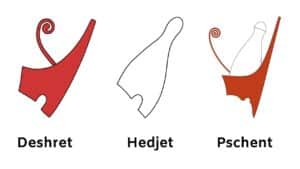
the administrative unification carried out by the first king of Egypt
All these facts became inherent in the following dynasties.
In administrative terms, the pharaoh exercised an aggregating and conciliatory policy over the “nomos”.
These were small administrative divisions of local power from the previous territorial framework, which were now part of a unified Egypt.
Only an autonomous, cohesive and properly hierarchical government would allow the pharaoh to guarantee internal political stability and deal with the kingdom’s needs and adversities.
the first king of Egypt | the stability of the borders
On the military front, fighting the Nubians to the south, the Libyans to the west and the Bedouins of Sinai to the east were among the main concerns of the 1st and 2nd dynasties.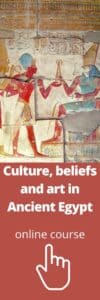
But only defensively and without expansionist intentions, as the pharaohs’ priority was to secure the borders, avoiding the infiltration and disturbance of these peoples in Egyptian domains.
In any case, underlying the essentially defensive nature of these undertakings was the idea that the Egyptian citizen was superior to other human groups.
This aspect revealed a form of social identification between the peoples that made up the unified kingdom of Egypt.
the first king of Egypt and technical development
The technical development of the Thinian period was revealed in architecture with structures of surprising complexity, such as dams and irrigation systems.
(Cyril Aldred – 1970).
These constructions boosted agricultural success, the main economic and subsistence system of Ancient Egypt.
Ensuring its prosperity and abundance also affirmed and guaranteed pharaonic power, thus justifying the union of kingdoms.
The first king of Egypt and cultural development
On a cultural level, the Egyptians developed a writing system that allowed the central government to record, organize, transmit and archive its communication.
And also to disseminate information or knowledge within the kingdom (technical, religious, scientific).
Without writing, it would not have been possible to achieve the rapid development characteristic of this civilization.
Without any tangible, lasting and legible support for the political and intellectual classes, information becomes fragile, dispersed or lost.
Still on a cultural level, during the reign of the first king of Egypt the Egyptians devised a solar calendar of 12 months and 30 days, and developed myths about the origins of the Cosmos and Humanity.
Of these myths, the myth of Osiris, a god related to fertility, commerce and life beyond the grave, became widespread.
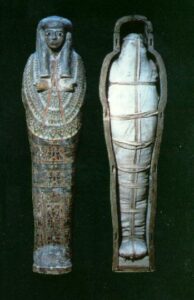
Thus, with a belief rooted in the resurrection of the soul, which would only live as long as the earthly body existed, the cult of the dead spread along with the practice of mummification.
In short
The importance of the unifying action of the first king of Egypt made it possible to achieve the advanced level of political, cultural and economic development characteristic of this civilization.
Otherwise, this would not have been possible, as the essential goods provided by the stability, abundance and coordination of interests promoted by his centralized “political machine” would have been lacking.
Learn more about Ancient Egypt

Diana Carvalho
Mestre em História e Património, membro do Conselho Científico da Revista Herança e colunista em a Pátria. Está actualmente integrada como técnica nas escavações arqueológicas do Castelo de Leiria. É também autora de artigos científicos na vertente do Património Cultural e da História.

